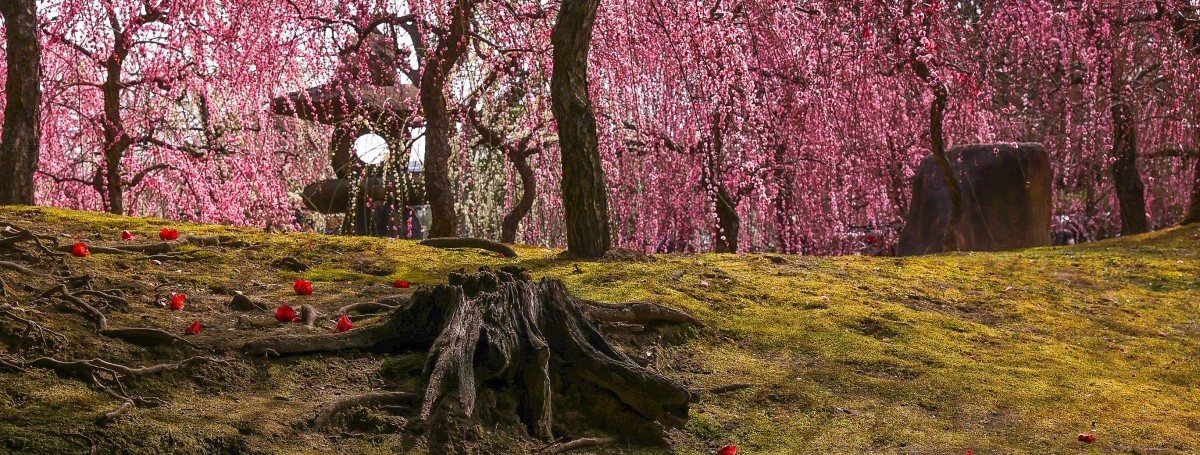All images courtesy of the author.
It’s 8pm on a Sunday night in Tokyo and, as usual, I clear my schedule to catch the latest episode of the historical drama Dear Radiance (Hikaru Kimie). The show is set in the lush universe of Japan’s 11th century and follows the life of Mahiro, while turning a close eye to the political machinations of the Heian aristocracy that surrounds her. In a recent episode, star-crossed lovers Mahiro and Saburo finally came clean with their secrets, namely that Saburo is not a commoner and that his violent brother murdered Mahiro’s mother. But the greater drama for the me is that Mahiro is actually Murasaki Shikibu, the great Japanese writer of the novel The Tale of Genji, written circa 1000 AD.
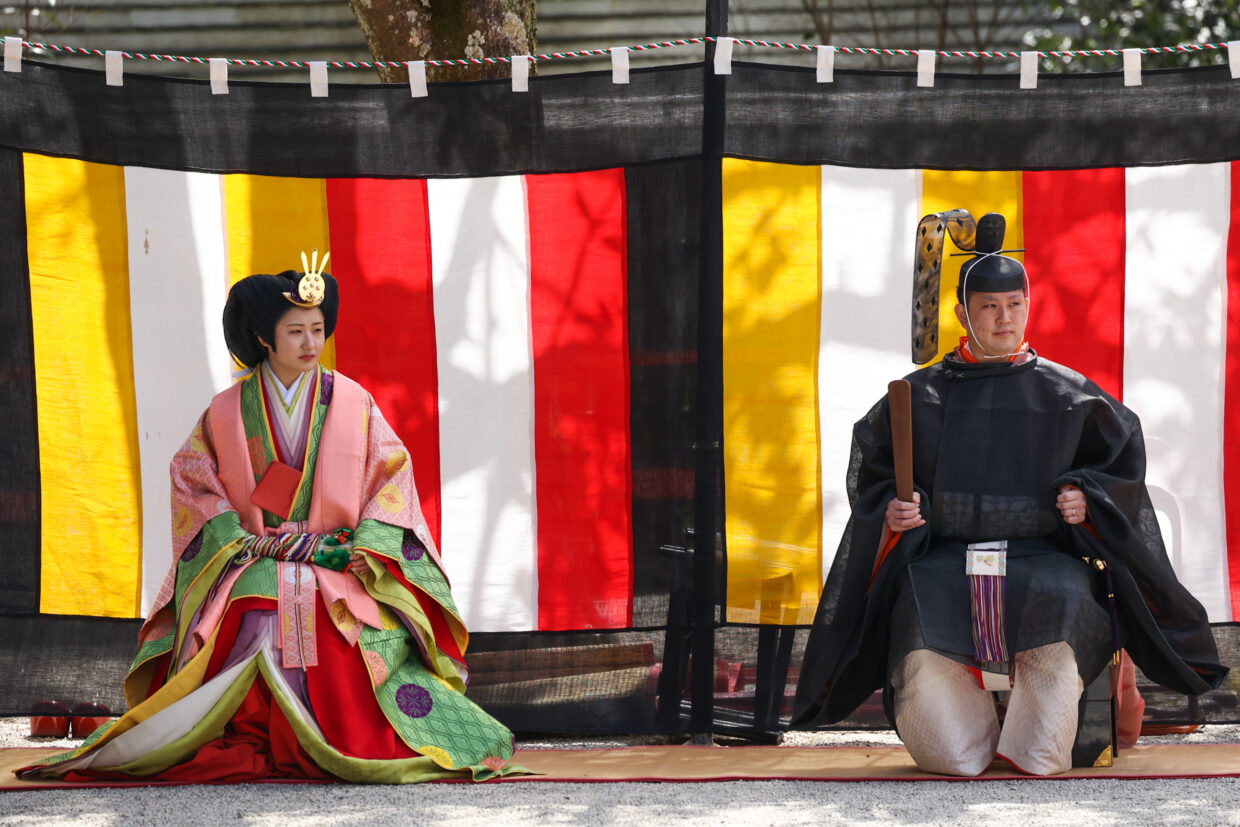
Murasaki Shikibu meshed with my reading psyche early in my life and remains in my brain, influencing me. I had a white father who grew up in America and a Japanese mother, and very early learned the trick of relating to characters emotionally even if they didn’t look like me, which they almost never did. Jo March, the classic bookish girl’s first love, was spirited and honest and I told myself I could be too.
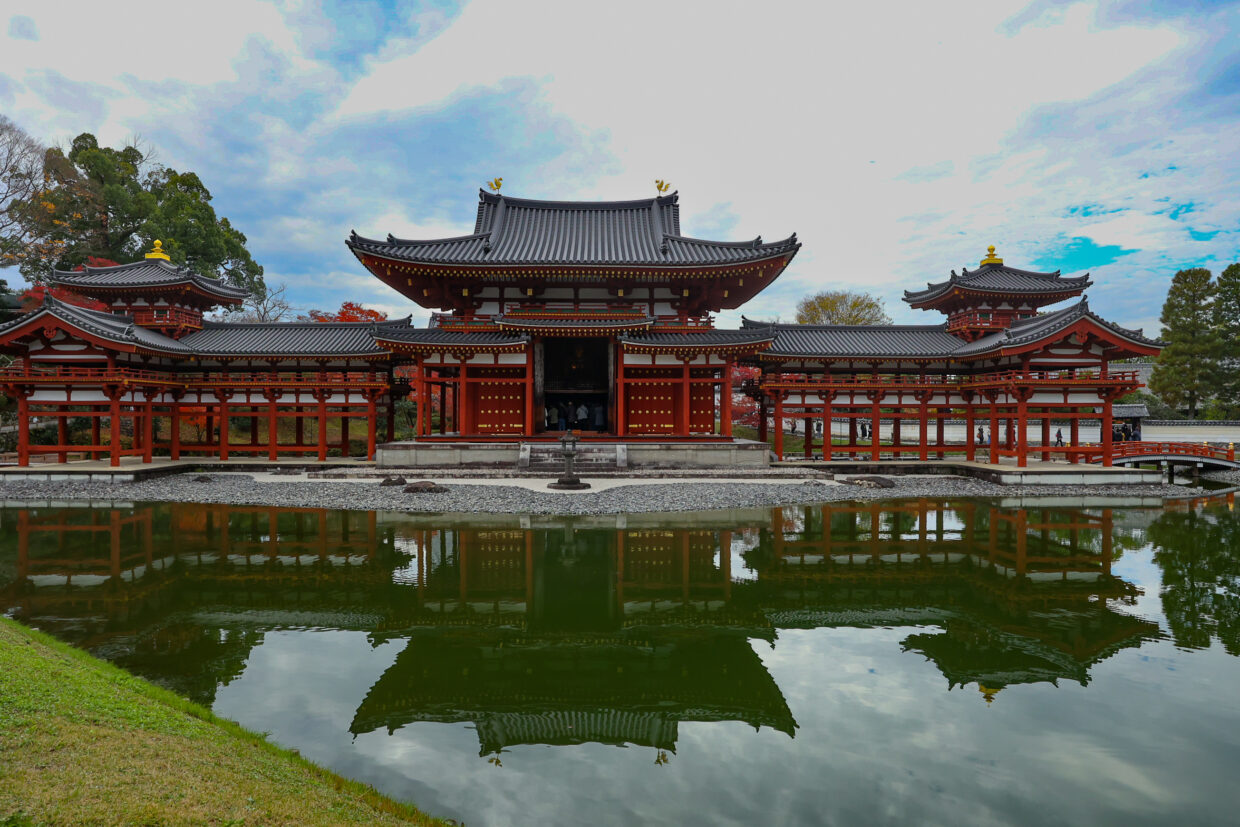
When I was fourteen, my mother took me to Uji, near Kyoto and told me about The Tale of Genji. As we drank our matcha tea, my mother calmly informed me Genji was the world’s first novel and written by a woman.
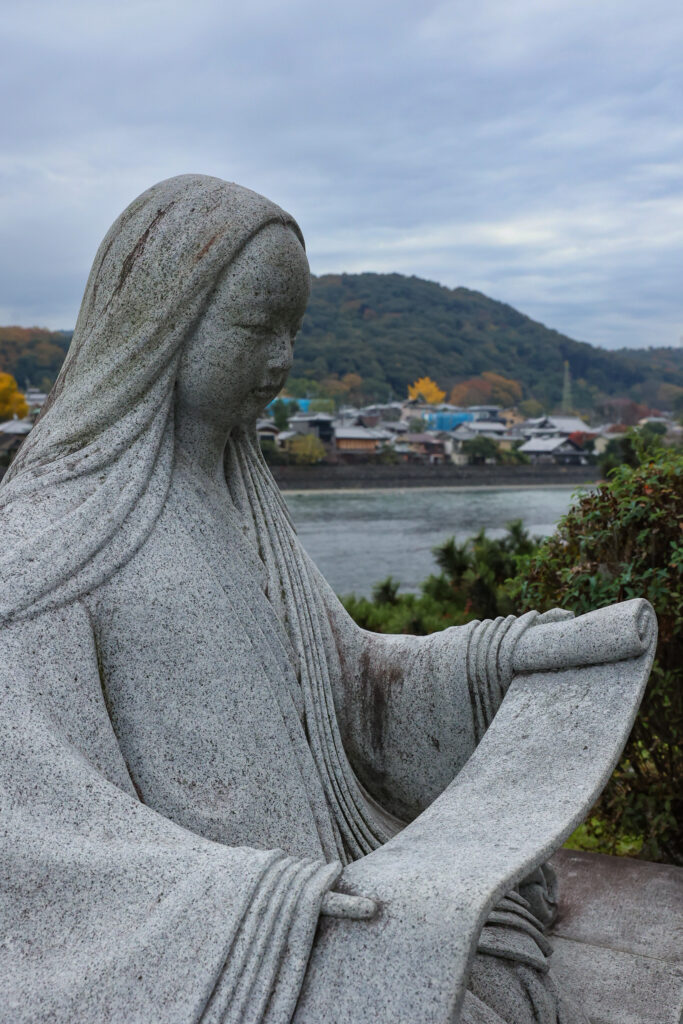
Ever after, when I ran into a stereotypical image of an Asian woman in western culture, Shikibu appeared in my imagination like some apotropaic force, warding off evil voices in my head.
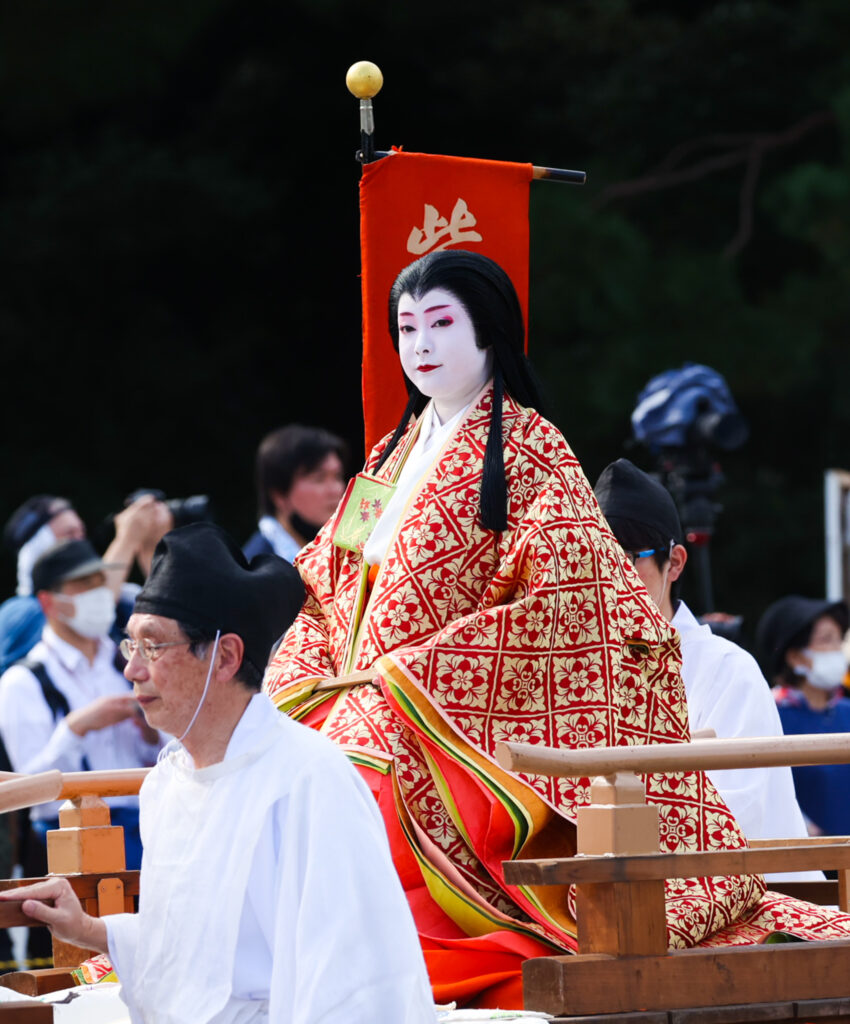
A weighty book comprised of 54 chapters and almost 800 poems, The Tale of Genji features the amorous pursuits of Prince Genji and his paramours, most of whom are women. The novel’s impact on Japanese culture has been profound and long-lasting; the well-known, and male, twentieth century writers, Mishima and Kawabata, often cited The Tale of Genji as inspiration. My own comprehension of Genji has been gradual, because the novel requires that we meet it on its own terms and broaden our understanding of what fiction can be.
We know from history that Shikibu could write both in kana, the “women’s” writing system in Japanese, but also in kanji, or Chinese characters, which were reserved for men. Dear Radiance plays on this historical fact, giving Mahiro a job ghost-writing poetry for lovelorn men who can’t seem to come up with their own poems, making her another “spirited girl” who will become a writer.
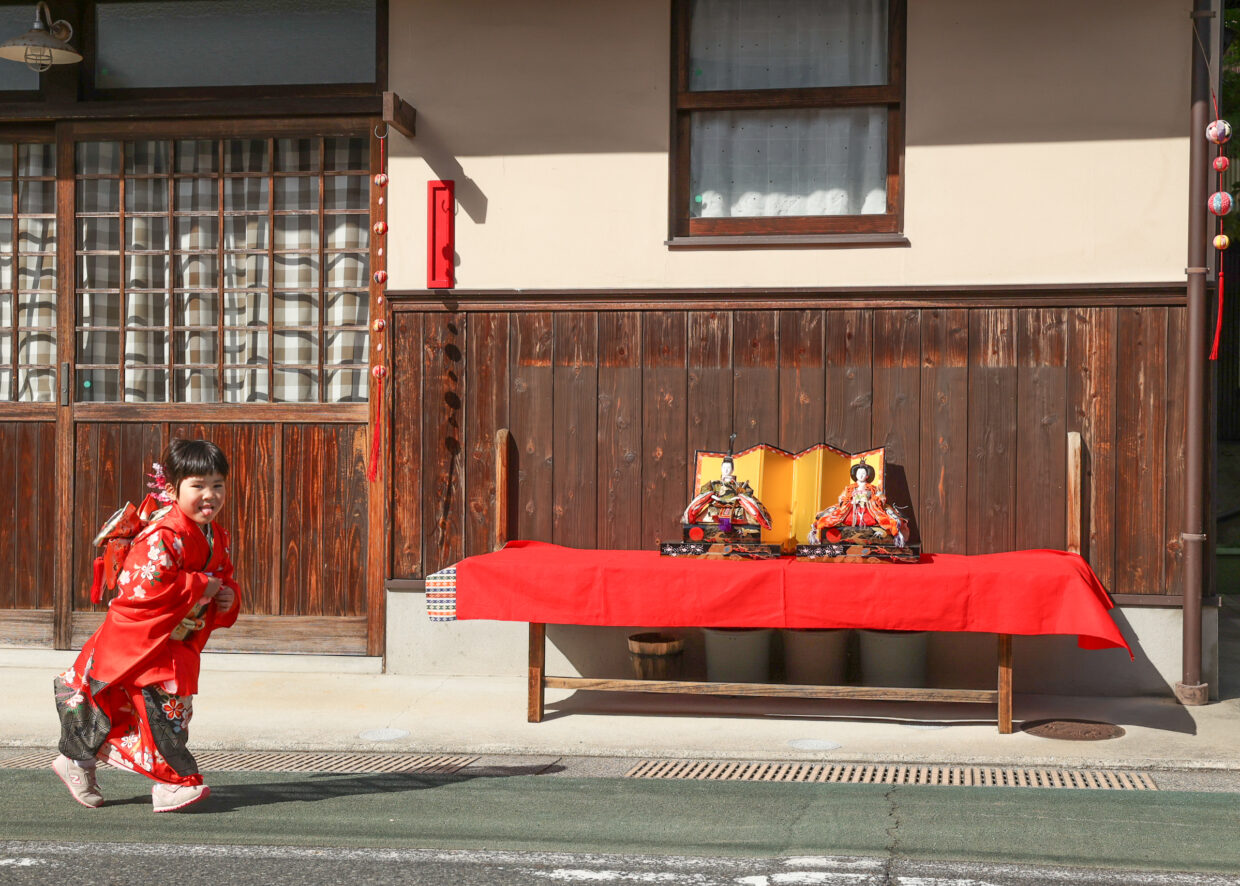
Or, consider the incident of the escaped pet bird which appears in Dear Radiance, episode one, and mirrors The Tale of Genji, chapter five. Murasaki, the character in the novel, is in tears because her pet sparrow has escaped—she is ten—and her sorrow and unaffected nature move Genji deeply. In Dear Radiance, the novelist-to-be Shikibu has lost her pet varied tit (a perching bird) and her sorrow and spirit also charm Saburo, who will later bring her to court where she will write The Tale of Genji.
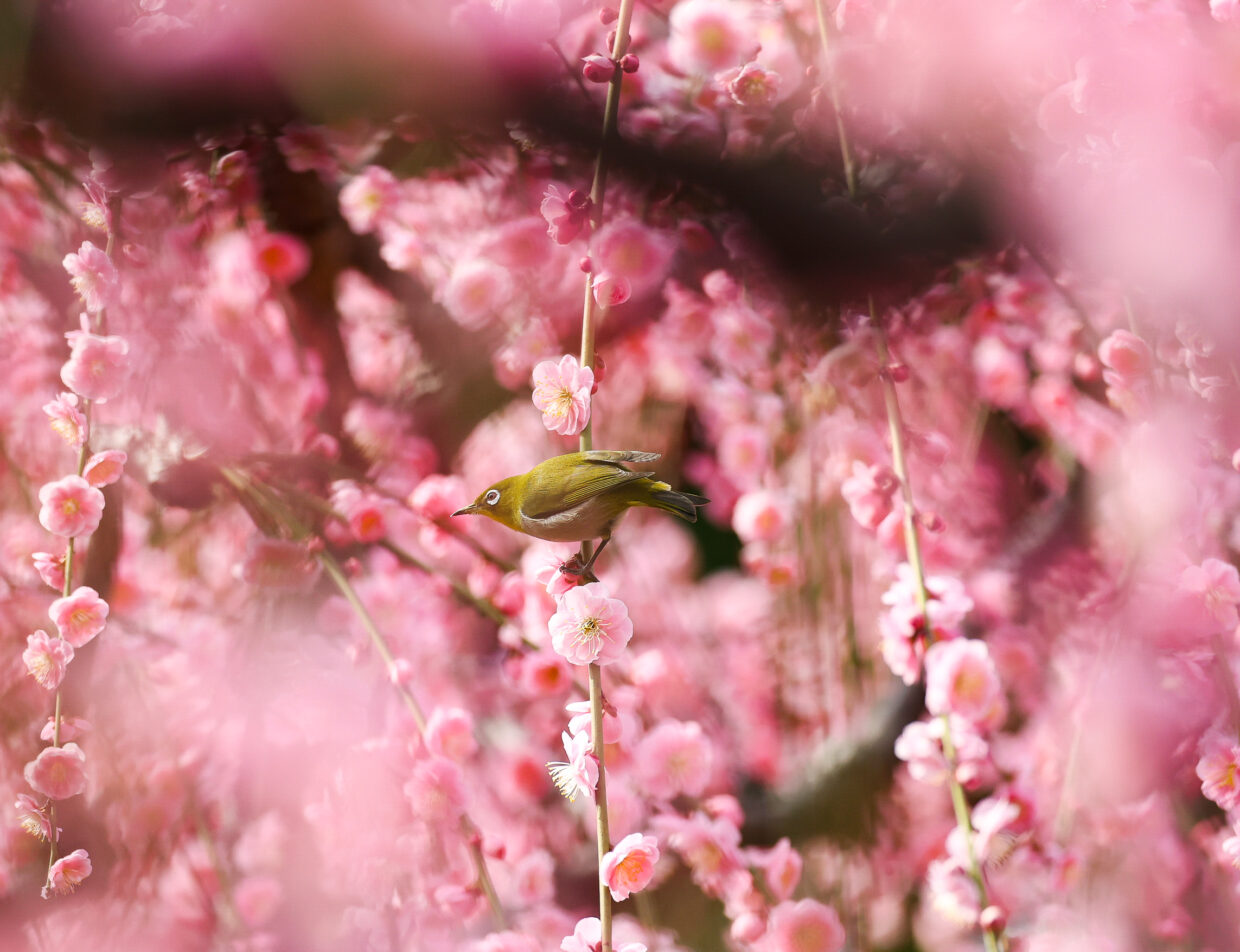
Dear Radiance is full of bird sounds—angry, amorous, calming—to accompany plot points, much as Genji the novel is full of poems in which birds and flowers express the emotions of their writers.
The gardens of the present-day imperial palace in Kyoto are a hot spot for birding due to a water fountain set off in a grove a trees. When I went last spring, I saw a man and a woman standing around with binoculars. The man had a small Tupperware of unsalted, evenly chopped peanuts, one of which he placed, at regular intervals, in his hand. varied tits flew down to him, retrieved peanuts and flew back up into a tree.
The novel requires that we meet it on its own terms and broaden our understanding of what fiction can be.The man had a permanent expression of bemused derision, which made me wary, but I wanted to ask him about some bird gossip and went to say hello. He gave me a couple peanuts and as I held out my hand, he told me how humans have lived closely to the varied tit. “Until recently they were employed by shrines pick out a fortune for humans.”
One by one, birds landed on my hand too. I asked about other birds that come to the fountain, like the Blue and White Flycatcher I badly wanted to see.
“Maybe in May.”
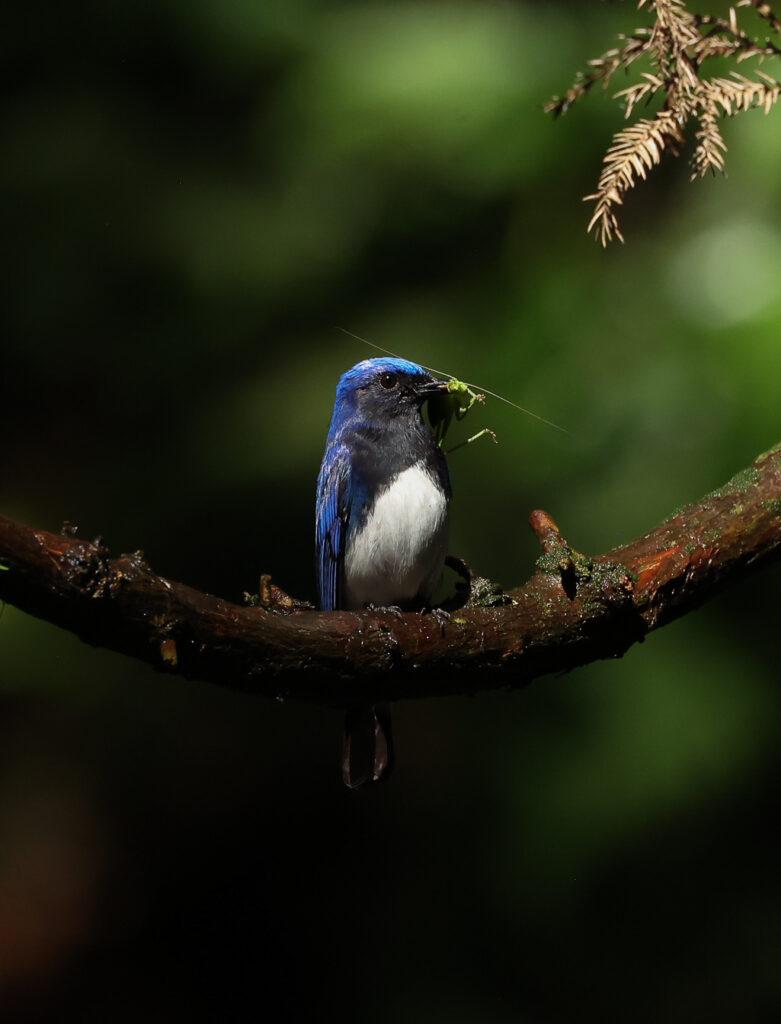
“During the Hollyhock festival,” I said.
The man and his companion laughed. “Oh, that.”
“Weren’t you in that one year?” his companion asked.
“I was. The year they had that ugly Saion. I hope she’s prettier this time.”
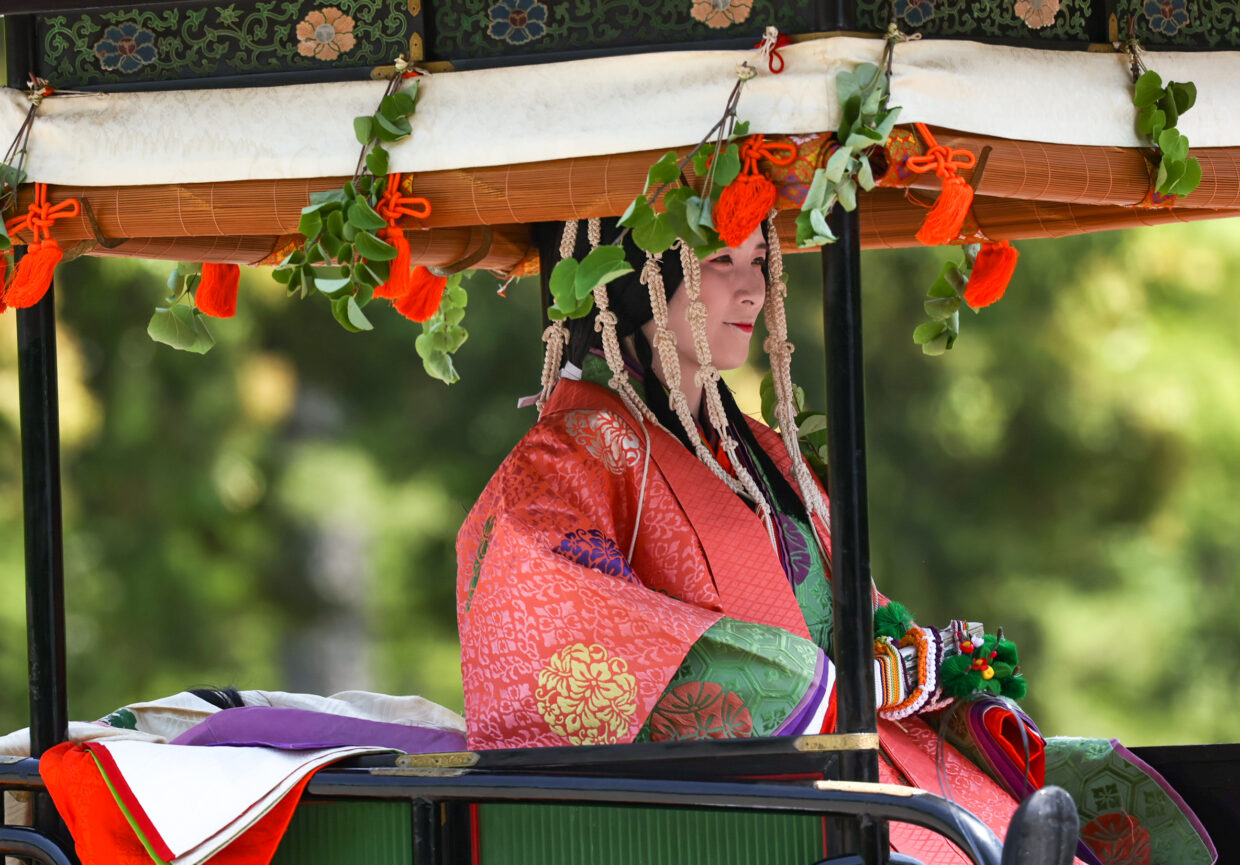
They laughed again, their mockery reminding me of the courtiers Shikibu skewers in her book.
The Hollyhock festival appears in The Tale of Genji, and the Saion is a woman from a high-ranking position chosen to be a medium to the god for whom the festivities takes place.
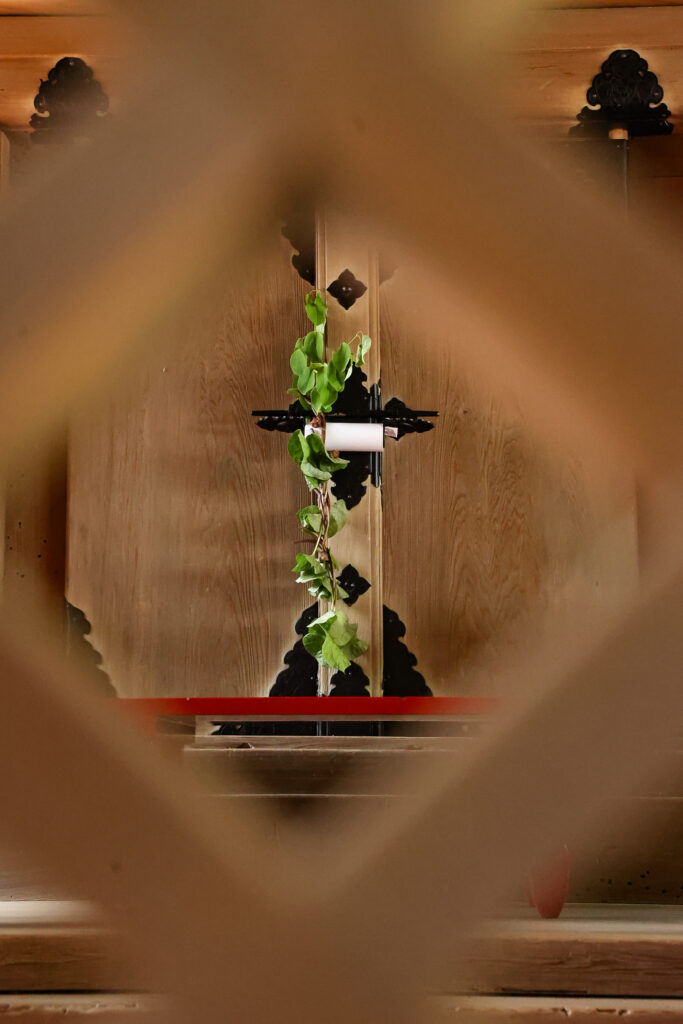
In The Tale of Genji, Chapter nine, the lady Aoi and lady Rokujo have a run in on their way to the festival and later, Rokujo’s spirit astrally projects and kills Aoi.
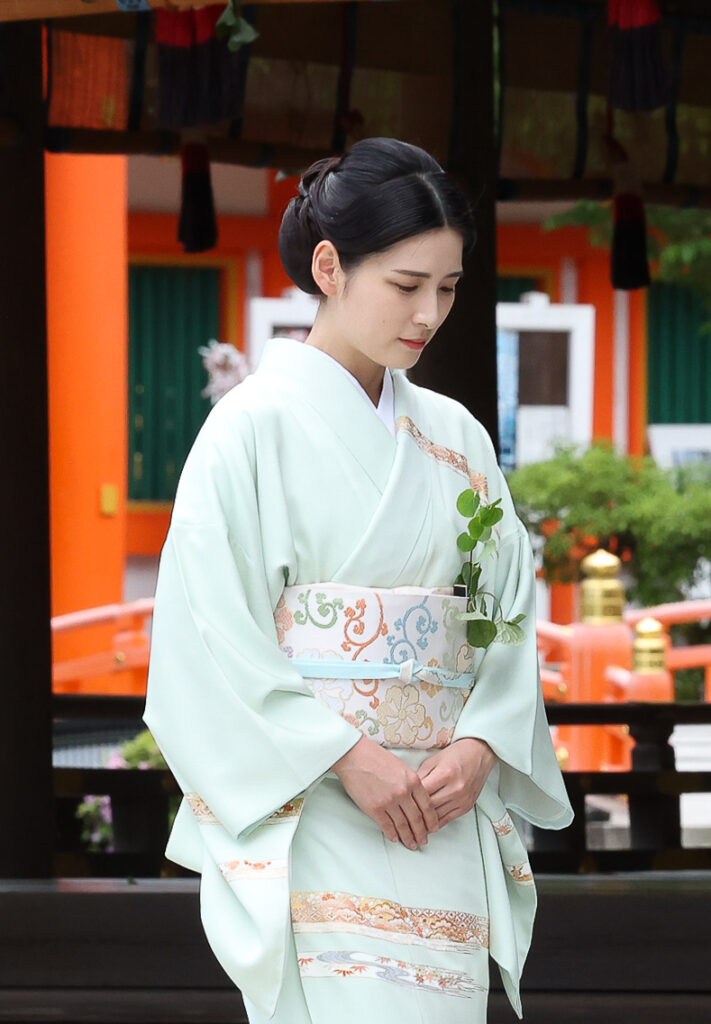
The story of Rokujo and her power pervades the Tale of Genji; she’s a terrifying woman whose anger is destructive, but also grants her agency. Her complexity is a sharp contrast to the simplistic dragon lady.
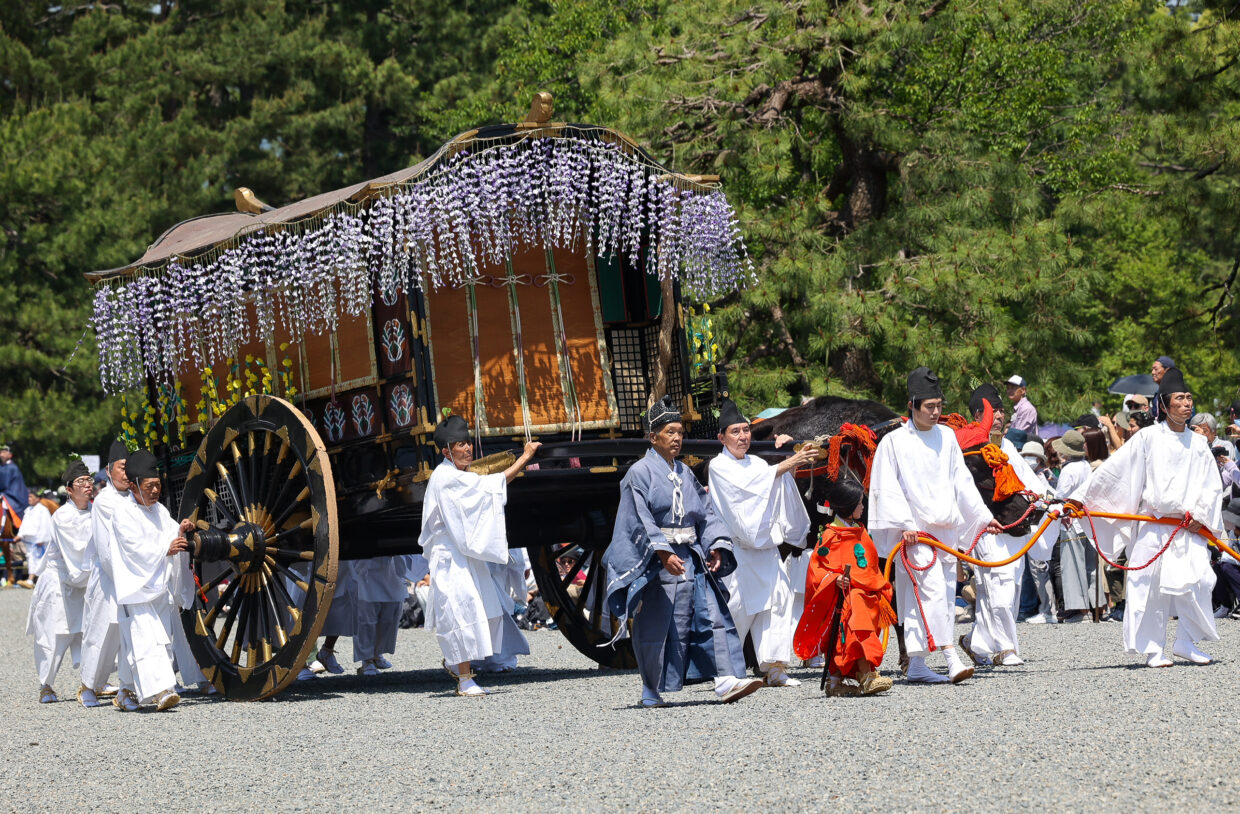
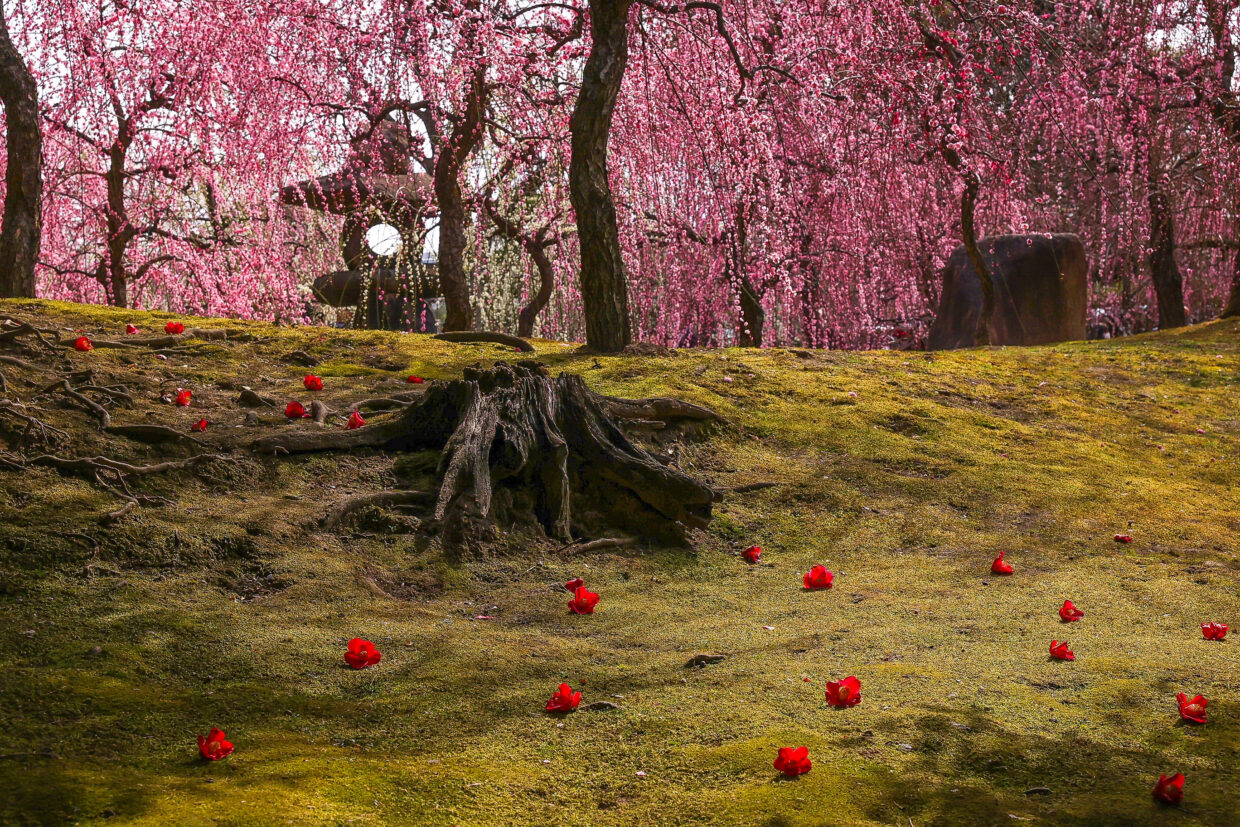
Each character in The Tale of Genji is given a poetic soubriquet in lieu of a name, the nickname often referencing a flower. Johnangu shrine still grows every single plant mentioned in the novel.
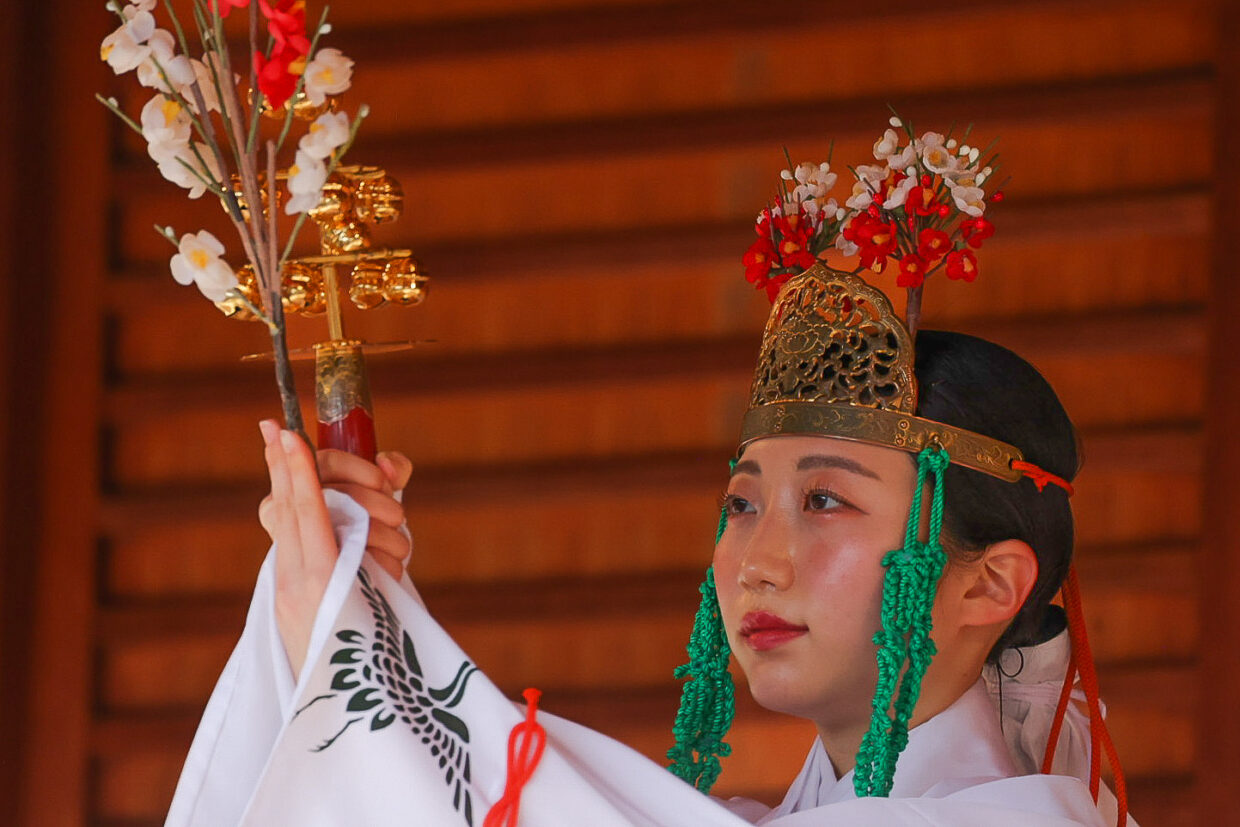
Three of the main women in Genji’s life are named for purple flowers: his birth mother, Kiritsubo for the paulownia tree and first love, Fujitsubo and his great love, Murasaki, for the wisteria. Today much is made of the cherry blossoms in Japan—and they are spectacular. But so too are the wisteria, the official symbol of the powerful Fujiwara family, who ruled Japan for centuries, which decorates the floats of the Hollyhock festival.
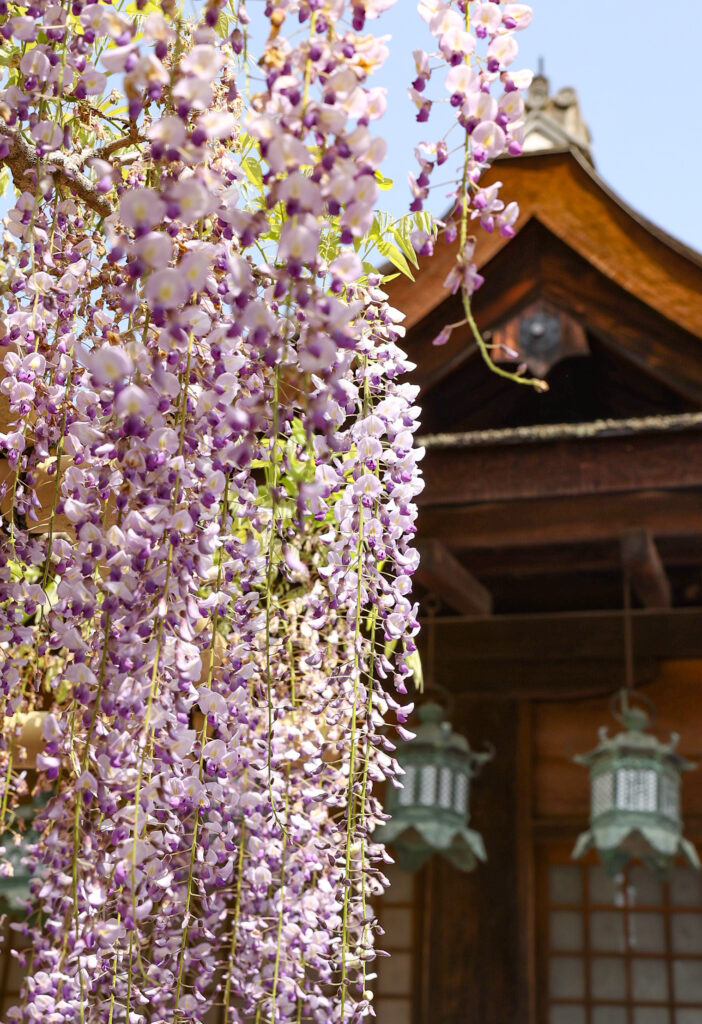
In May, when the high that comes from chasing cherry blossoms has passed, the wisteria take over, wild blossoms filling in the crevasses of mountain sides, centuries old shrine vines blooming in profusion and cultivated varieties forming colored canopies. When I went to the Ashikaga Flower park north of Tokyo to see the one hundred-and fifty-year-old “mother tree,” it was hard not to think of Tale of Genji and the great emphasis Shikibu placed on the color purple.
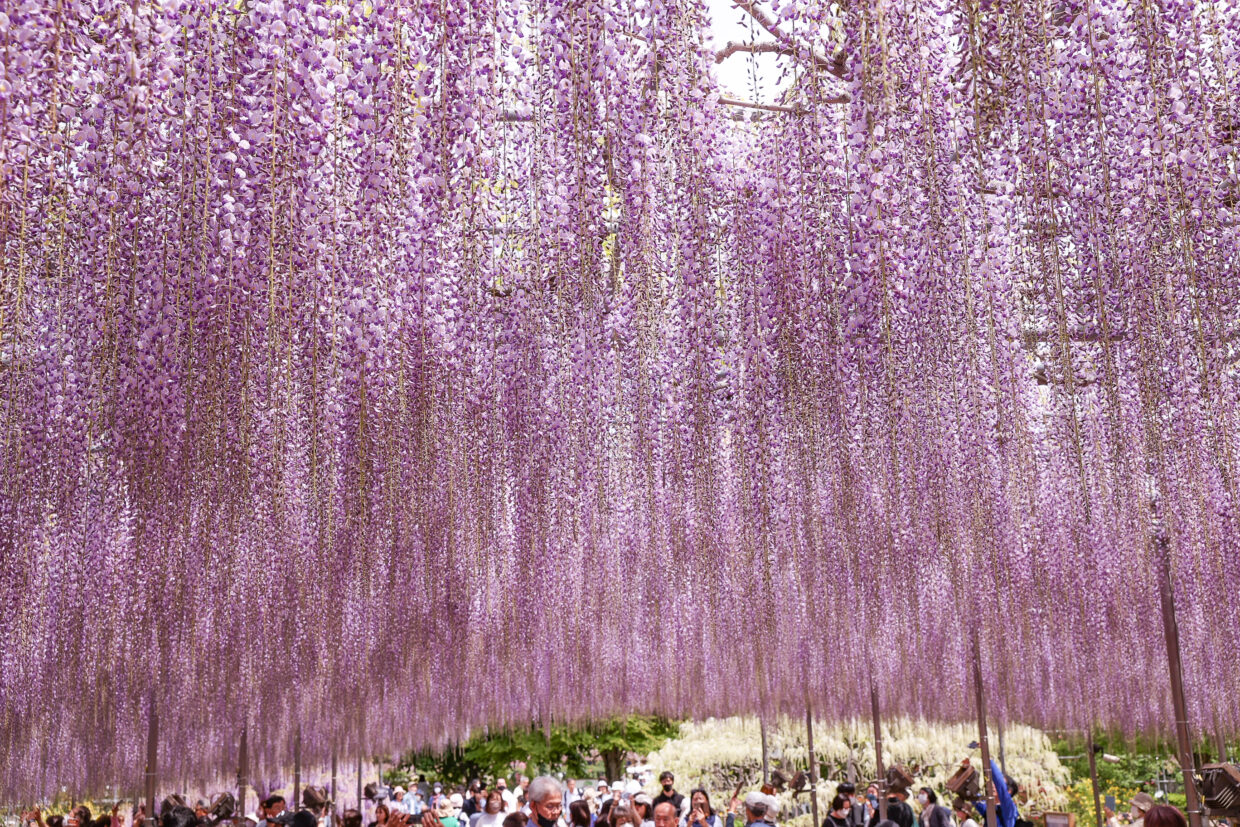
James Cameron, the director of the film, Avatar which is steeped in ecopoetics, is said to have based “the mother tree” on the wisteria in Ashikaga.
Jo March transforms from spirited-girl self into a writer, becoming successful only when she stops writing melodrama to focus on “what she knows.” This is one of the big lessons I heard often at the start of my writing career: be a person of substance and write what you know. In Dear Radiance, Shikibu starts out like Jo March—a spirited girl who will become a great writer. To some extent, Shikibu also wrote about what she knew. But critics often marvel at her great creation, Murasaki, who is Genji’s great love.
In Murasaki’s ever-deepening sensitivity and attunement to nature, it is as though she becomes a part of the natural world, peering into the structure of the forces that create the rhythm of life. Such a character arc—a girl who takes on the profound qualities of a noble flower—fall outside either the binaries of delicate, self-sacrificing woman or the dragon lady, but could be seen as a harbinger of ecopoetics, another way in which Shikibu was a pioneer. I am looking forward to watching the transformation on screen.
__________________________________
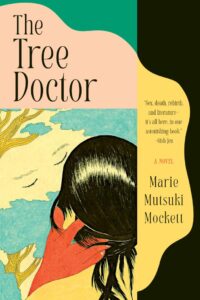
The Tree Doctor by Marie Mutsuki Mockett is available from Graywolf Press.

